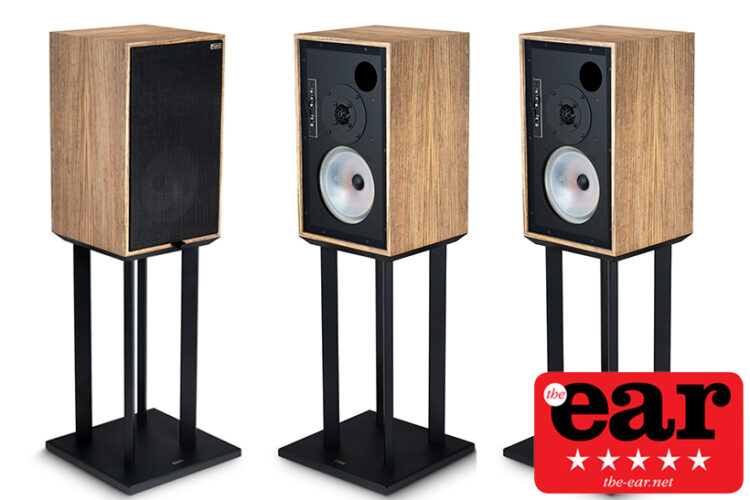It is so appropriate to be testing a Rogers-made BBC loudspeaker design since the company was so closely linked with the broadcaster’s transducer development and manufacture decades ago. Indeed, the original bass unit of the LS5/9 (under scrutiny here) was a collaboration between BBC engineers and Rogers at a time when the Corporation had lost much of its own loudspeaker expertise: Messrs Harwood and Hughes had left to begin their own manufacturing companies (Harbeth and Spendor, respectively) and Maurice Whatton had also moved on. These three audio ‘giants’ had been behind the creation of other BBC masterpiece designs and when there was a need to create a smaller and, it has to be said, less expensive, version of the LS5/8 Grade One studio monitor, the BBC looked to its principal manufacturer for assistance.
Design
Many working in the BBC acknowledged that, in reality, the baby LS3/5A was not up to the job; indeed its ‘3’ designation indicates that it is only a Grade Two monitor and should not be used for the final balance of transmitted material. Furthermore, its frequency response did not mirror the reference LS5/8; instead it had a pronounced mid-band, the very attribute that became its trademark. But what to do? The LS5/8 was just too humungous to use in many locations and, with more and more studios converting from mono to stereo, there was not only the added cost of a second speaker but also a space requirement to house two. Many locations just could not house a pair of larger monitors with suitable placement for an authentic stereo balance.
The answer? Well, the LS5/9 was created in prototype as a new medium-power studio monitor. It was physically small enough to be accommodated in areas where a large high-power monitor would be inappropriate and looked to solve the broadcaster’s problem: “The main design and performance features are as follows: a vented cabinet having a volume of 28 litres (1 cubic foot). Two drive units; a proprietary 34mm soft-domed high-frequency unit and a BBC designed 200mm low-frequency unit having a polypropylene diaphragm and a high temperature voice-coil. A low-level cross-over circuit feeds a 50watt stereo amplifier which drives the units separately; the cross- over frequency is 2.4 kHz. The axial frequency response is +/-3dB from 56Hz to 16kHz and the maximum sound level is 100dB(A) at 1m on axis measured in a typical listening room using light music.” To quote the in-house BBC Engineering Department’s report on the new speaker it’s clear that, in fact, it was an active version which was initially considered until the engineers created a passive variant which [somehow] sounded virtually the same or, at least, suitable
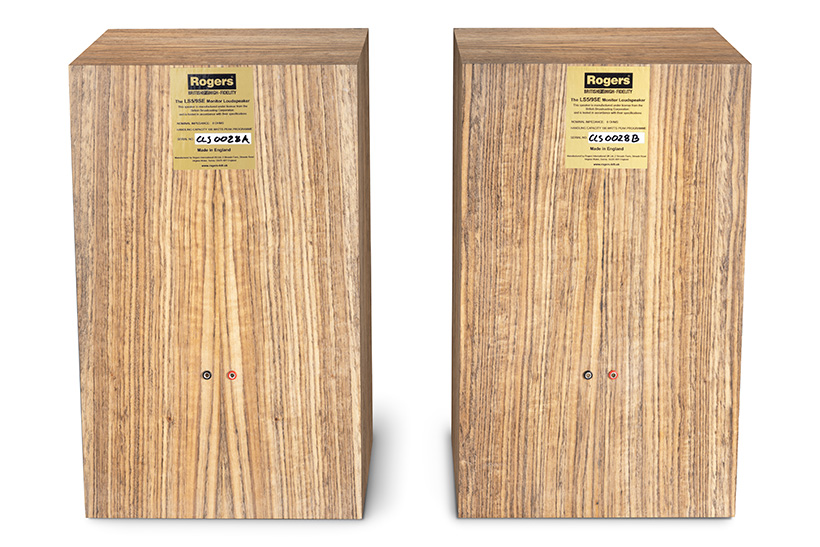
From 1983 Rogers made many hundreds of these under licence from the Beeb (because, while it still had design capability, the BBC was never about manufacture) until the company ceased trading in 1999 and the Mitcham factory closed. I was fortunate enough to be virtually brought up on the LS5/9 in my early days at the BBC and got to know the sound they produced. There was a classic BBC bass bump, a slight midrange dip and then a rising HF before a dramatic roll-off which, in practice, was more of a drop-off.
Having been at that Mitcham factory when it closed, and via a sojourn to famous brands including Audio Note and Exposure, designer Andy Whittle made a recent return to the Rogers name – now under Far Eastern ownership but with all-UK design and manufacturing based at new premises in Virginia Water. In the interim, several other variants of the LS5/9 have emerged, some less faithful to that original specification than others although the BBC waves them all through as ‘legit’ and collects its royalties along the way.
Whittle though was intent on re-creating an authentic LS5/9 again, one that is constructed from the finest 9mm Russian birch plywood with all joints hardwood battened with beech fillets. The thin-wall cabinet walls are critically damped with bituminous damping panels, this to drive cabinet resonances out of the critical audio band to where they are virtually inaudible above the ‘wanted’ sound. The reinstatement of that heavy, woven black Tygan fabric grille was also important to preserve what the BBC had originally created. As was use of the 34mm soft-dome Audax HD34 tweeter sourced from France, and the 210mm polypropylene bass unit which had to be specially reverse-engineered and re-tooled at no small cost. While it may have been tempting to resort to a rubber surround, Whittle was adamant that, for authenticity, it had to be of PVC in order to create the right sound, notably in that all-important midrange.
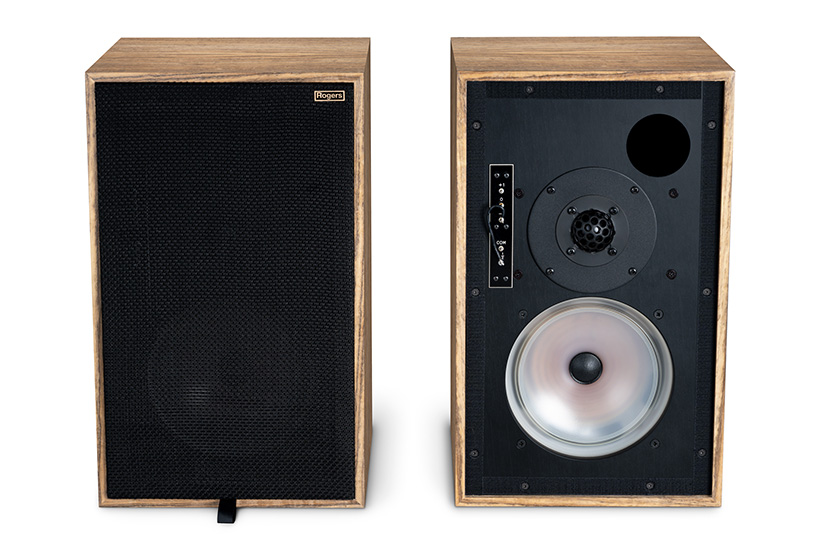
Here though we have a Classic SE, something of a deluxe version of the ‘basic’ Rogers LS5/9 which benefits from upgraded components on the 27-element 3rd-order crossover board such as high-power, iron-dust-core inductors (rather than the cheaper ferrite alternatives). The front baffle is also enhanced with Panzerholz replacing birch-ply just for this panel. The hardwood resin composite is expensive and difficult to work with, but Whittle demonstrates how the extra effort is worth it as you get a more open, natural LF response than before with improved imaging, never a 5/9 strongpoint from my recollections.
Sound quality
The review pair arrived finished in the most amazing veneer of an African hardwood called Amazaque and painstakingly built in Essex; with less-costly walnut, rosewood and olive wood options also available. As with BBC monitors, the grille should be left in place for the intended tonal balance to be achieved. I recall ‘speed-frame trolleys’ being the BBC solution for stands back in the day, but here I was fortunate enough to be loaned a pair of dedicated, matching stands constructed of the same Panzerholz material as the front baffle and made in Kent.
After enduring a few bars of excessive HF definition, I recalled how we had always used the LS5/9s in studios without any toe-in. A quick adjustment to a straight-ahead position and I was away. My faithful Hegel H190 streamer/DAC/integrated was happy with the fairly benign load being presented and the quoted 87dB sensitivity. A speaker position some 0.5m away from the rear wall proved ideal and I was greeted with a familiar experience of openness, transparency and air as BBC Radio 3 treated us to Mahler 7 by the BBC SO for the afternoon concert. The acoustics of the venue were brought home, literally, to my listening room, and I became immersed in the music, noting the haunting and evocative tones of the two Night Music movements not to mention the sheer scale and dynamics of the first movement as the harmonic textures and structural complexities were unravelled before my ears. The magic was back, and all thanks to Andy Whittle and those who now own Rogers.
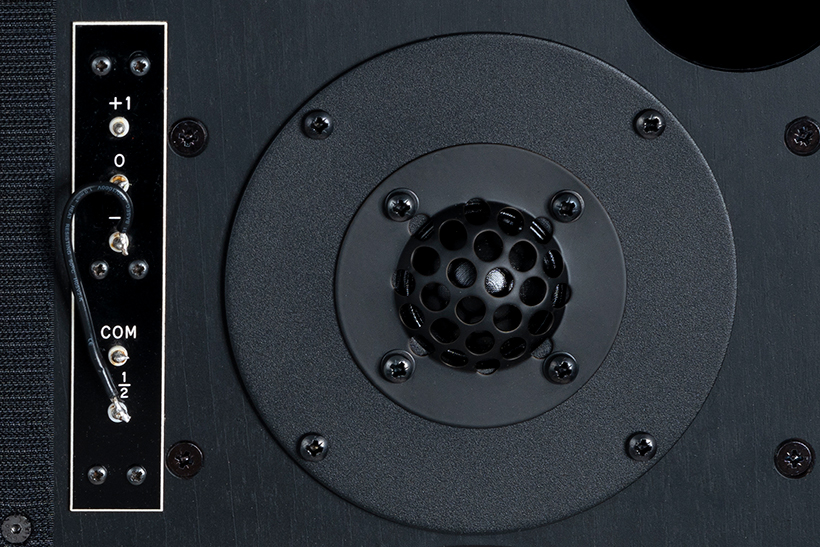
Feeling guilty about indulging in an entire symphony I returned to the speakers after some work to enjoy the BBC National Orchestra of Wales for the evening concert including Mozart’s Flute and Harp Concerto (K299). Again, the LS5/9s were completely at home and reproduced the material with consummate ease, the notes flowing from the speakers in a way as to make those not small cabinets disappear. I was not listening to two boxes housing drive units; they had vanished into an almost seamless soundstage of delicious width and depth. Again, the venue’s acoustics came through with clarity along with background noises ‘off mic’ to aid the realism. The audience applause also retained its naturalness rather than degenerating into that all too common sound effect of fish frying. These speakers are indeed something very special; those BBC boffins knew what they were at and the magic has been recaptured in the new Rogers’ variant.
While the notion of pace, rhythm and timing was not prevalent when the speaker was designed almost 40 years ago, I switched over to Radio 1Xtra for a blast of Evil Eye by Bellah and was impressed at the way these conventional boxes handled the more raucous material: the bass managed to remain smooth and unaggressive while relaying the pounding beat in a way as to make my foot tap involuntarily. These units can clearly play loudly, much louder than I needed and yet remain clean and free from breakup even with such demanding source material. That BBC requirement for 100dB(A) is truly impressive in terms of moving air to create meaningful SPLs.
Back to my more staple diet, and female vocalists whose material I feel I know; here the ethereal vocals from Kate Bush (Hounds of Love) were crystal clear and free from audio traits suffered by so many poorly executed designs. We are spared sibilance, chestiness, boom and nasality; as one would have expected from a competent broadcast monitor. And it was the same with speech reproduction, as I enjoyed hours of material from both TV and radio transmissions. HF detail was retained but without unpleasant artefacts affecting the overall tonal balance which remained natural. Indeed at one point I got up to answer a telephone which was ringing on the set of Minder, that’s realism for you.
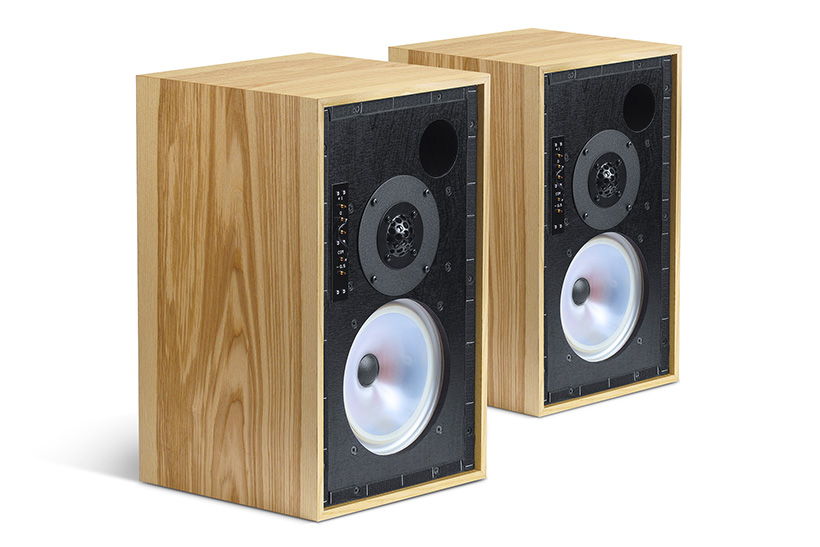
As with all good monitors, there is an ability to discover nuances and detail which other speakers simply gloss over and they become lost in the mire. Here we have the analytical ability which ensured the BBC programmes of the time (mixed using the 5/9), were well-balanced and a joy to listen to.
Conclusion
The LS5/9 is an ageing design but is has lost none of its magic as far as I am concerned. These were created as broadcast monitors, principally to balance speech and light music, but with the slight tweaks which form the Classic SE version here they do a darn good job of rendering light rock and pop as well, with more than enough bass extension for most domestic situations.
Initially I did blink at the price, but given that the 5/9 is less than twice-the-price of a pair the highly compromised LS3/5A mini boxes, then they clearly represent a good deal. We must consider that 20% of the retail price goes to the Exchequer as VAT (UK) while the BBC takes its cut for permission to replicate the design. These speakers are hand-made in the UK and that is another cost to consider: no mass-produced MDF boxes these, assembled in some Chinese backstreet to save on costs. These are made by skilled crafts people in southern England.
In the hi-fi arena, we are oft to forget that the shoebox 3/5A was intended as a speech/drama effects monitor only, for use in restricted spaces such as outside broadcast vehicles. It was never intended for music reproduction but, rather, the correct rendering of speech at ‘natural’ levels. Even in my modest listening room, the little box has limitations which make the LS5/9 a much more viable alternative and I would opt for them each and every time in preference. We are indebted to Andy Whittle for going to the trouble of reinvigorating them for our pleasure. Watch out for his next masterpiece which surely can’t be far off since this designer doesn’t sit still for long.


